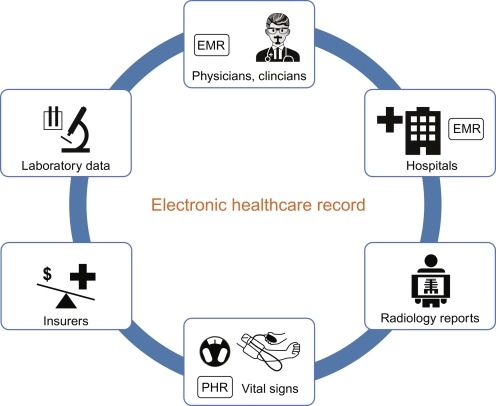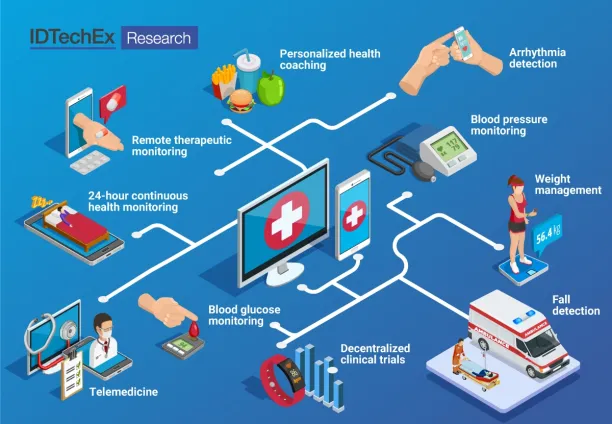Healthcare has become one of the most data-intensive industries, with patient information being generated and stored in vast quantities. 1 However, this wealth of data also comes with a significant responsibility to protect patients’ sensitive and personal information.
Data breaches can have severe consequences for patients and healthcare providers. In the U.S., more than 40 million patient records are compromised yearly. 2 Moreover, hospitals and health insurance companies rank lower in customer satisfaction than other industries due to a lack of transparency, dissatisfaction, and bad customer service quality.
Data encryption has become a critical component of healthcare data security to mitigate the risk of data breaches. We explore the importance of data encryption in healthcare, its benefits, and top encryption practices in the healthcare industry with real life examples.
What is healthcare data encryption?
Data encryption in healthcare refers to converting sensitive and confidential patient data into a coded language that can only be accessed by authorized individuals with a decryption key. This means that even if an unauthorized person gains access to the encrypted data, they cannot read or use it without the appropriate key.
To see the full definition, use cases, and best practices of data encryption, look at our article “Data Encryption: Types, Importance & FAQ”
What is the importance of data encryption in healthcare?
Approximately 30% of the world’s data volume is generated by the healthcare industry. 3 Healthcare providers and business partners must maintain patient privacy and adhere to HIPAA and other legal obligations, such as the EU’s General Data Protection Regulation (GDPR). Encryption is a critical component of such data security in the healthcare industry.
By implementing robust encryption methods, healthcare organizations can:
- Protect patient data
- Comply with regulations
- Respond to data breach incidents
- Enable secure data sharing.
HIPAA, ePHI, and data encryption
Health Insurance Portability and Accountability Act (HIPAA) regulations require healthcare organizations to implement appropriate safeguards to protect the confidentiality, integrity, and availability of electronic protected health information (ePHI). Data encryption is one of the methods that healthcare organizations can use to protect ePHI and comply with HIPAA regulations.
The HIPAA Security Rule requires healthcare organizations to implement technical safeguards to protect ePHI, including encryption. Specifically, the Security Rule requires healthcare organizations to implement a mechanism to encrypt and decrypt ePHI when it is stored or transmitted.4 The encryption method should be consistent with the National Institute of Standards and Technology (NIST) standards for encryption and should be implemented by the organization’s risk analysis and risk management processes.
The use of data encryption can help to protect ePHI from unauthorized access, use, and disclosure. Encryption can protect ePHI stored on electronic devices, such as laptops and mobile devices, and ePHI transmitted over networks, such as email and messaging systems. The use of encryption can also help healthcare organizations to comply with the HIPAA Breach Notification Rule, which requires organizations to provide notice to affected individuals in the event of a breach of unsecured ePHI.5
Top 5 use cases of data encryption in healthcare with real-life examples
1- Electronic health records (EHRs)
EHRs are designed to improve healthcare delivery quality, safety, and efficiency. They allow healthcare providers to access patient information quickly and easily, regardless of the patient’s location. This makes it easier for healthcare providers to make informed decisions about patient care, avoid errors due to incomplete or incorrect information, and ensure that patients receive the appropriate treatments. (See Figure 1)

Source: Science Direct6
Figure 1: Electronic Health Record
Real-Life Example: Epic Systems is a widely used EHR platform that supports a variety of healthcare providers across the U.S. and internationally. In one instance, at the Cleveland Clinic, EHRs enabled doctors to access patient records from any location, speeding up treatment decisions. For example, during an emergency, doctors could quickly pull up a patient’s complete medical history, reducing the risk of medical errors due to lack of information. The integration of EHRs also helped reduce hospital readmission rates by improving care coordination and follow-up after discharge.
2- Medical devices
More medical equipment, including insulin pumps and pacemakers, is being connected to the Internet and other networks. Encrypting data can help secure what is transmitted between these devices and other systems, ensuring that patient information is protected from unauthorized access.
Real Life Example: Medtronic’s Insulin Pumps allow diabetic patients to manage their insulin levels more effectively. These devices are connected to smartphones or wearable devices, enabling real-time monitoring and alerts. In 2019, there were reports of potential cybersecurity risks where hackers could theoretically exploit vulnerabilities in insulin pumps. This has pushed manufacturers to adopt stronger encryption standards to protect data being transmitted between the pump and the connected devices, ensuring patient safety and data privacy.
3- Remote patient monitoring (RPM)
Remote patient monitoring (RPM) is a healthcare delivery model that uses technology to monitor patients’ health remotely. It enables healthcare providers to track patients’ vital signs, symptoms, and other health data outside of traditional healthcare settings, such as hospitals and clinics.
RPM typically involves wearable devices, sensors, or mobile applications to collect and transmit data to healthcare providers. The collected data can include various patient health information, such as blood pressure, heart rate, blood sugar levels, and medication adherence. (See Figure 2). Encryption can be used to protect sensitive data that is transmitted between patients and healthcare providers, ensuring that patient privacy is maintained.

Source: IDTechEx 7
Figure 2: Remote Patient Monitoring
Real Life Example: Philips HealthSuite is a cloud-based platform that collects data from various remote monitoring devices such as blood pressure cuffs and wearable heart monitors. During the COVID-19 pandemic, RPM solutions were employed widely to monitor chronic conditions like heart disease or diabetes, reducing hospital visits. A real-world implementation involved using RPM to monitor patients recovering from heart surgery, reducing hospital readmissions by enabling doctors to adjust medications and treatment plans based on real-time data collected from home.
4-Telehealth
Telehealth, also known as telemedicine, allows patients to receive medical care, consultancy, and support from healthcare providers without the need to visit a physical clinic or hospital. Telehealth services can be delivered through various technologies, such as video conferencing, remote monitoring, mobile health apps, and messaging platforms. Before the COVID-19 pandemic, only 11% of consumers reported using it in 2019. After the pandemic, it reached 76%. 8
These technologies allow patients to communicate with their healthcare providers in real time, share health information, and receive remote diagnosis and treatment. Encryption can help protect the data transmitted during telehealth sessions, ensuring that patient information remains confidential and secure.
Real-Life Example: Teladoc Health experienced massive growth during the pandemic, offering virtual consultations via video conferencing to millions of patients worldwide. This technology allowed individuals with chronic conditions or those living in remote areas to consult with specialists who might be hundreds of miles away. The surge in telehealth use during the pandemic showed the potential for long-term integration into healthcare systems. With proper encryption, patient-doctor video calls remained secure, ensuring the confidentiality of sensitive information.
5- Healthcare data analytics
Healthcare data analytics analyzes and interprets large sets of healthcare data to extract meaningful insights and inform decision-making. It involves using statistical and computational techniques to identify patterns and trends in healthcare data and to draw conclusions about patient outcomes, population health, and healthcare delivery.
Healthcare organizations increasingly use data analytics to gain insights into patient health and healthcare operations. Encryption can help protect this data from unauthorized access, ensuring patient privacy.
Real Life Example: Kaiser Permanente uses advanced healthcare data analytics to manage population health and improve patient outcomes. By analyzing data from EHRs and other sources, Kaiser can identify high-risk patients (e.g., those at risk of heart disease or diabetes) and intervene earlier with preventive measures. Their use of predictive analytics also helps optimize hospital resource use, predicting patient admissions and reducing overcrowding. Data encryption plays a key role in protecting patient data while allowing the organization to perform meaningful analyses.
What are the benefits of data encryption in health care?
1- Protecting sensitive patient information
Healthcare organizations handle and store large volumes of sensitive patient data, which include:
- Personal information (such as names, addresses, and social security numbers)
- Medical records (such as diagnoses, treatment plans, and prescriptions)
- Financial data (such as insurance details and billing information)
If sensitive information falls into the wrong hands, it can lead to identity theft, financial fraud, or medical fraud, potentially causing harm to patients. Encryption helps protect this data from unauthorized access by converting it into unreadable code that can only be deciphered with a key. This ensures that patient privacy is maintained and that sensitive data is only accessible to authorized personnel.
2-Compliance with regulations
Healthcare organizations must comply with various regulations and standards, including the Health Insurance Portability and Accountability Act (HIPAA). These regulations mandate that healthcare providers implement security measures, including data encryption, to protect patient information. Failure to comply can result in significant fines and legal penalties.
3-Mitigating the risk of data breaches
Data breaches can have severe consequences for healthcare organizations, including
- Damage to brand reputation
- Loss of revenue
- Legal liability.
Encryption mitigates the risk of data breaches by making it more difficult for hackers to access sensitive information.
Read more: Data breach incident response
4-Enabling secure data sharing
Healthcare providers often need to share patient information with other healthcare organizations or patients. Encryption helps to ensure that this information is shared securely without the risk of unauthorized access or data breaches.
For further reading, check our articles:
- “Generative AI Healthcare Industry: Benefits, Challenges, Potentials”
- “5 Use Cases/Applications of Medical Sentiment Analysis”
5- Ensuring Data Integrity
In addition to protecting the confidentiality of patient information, encryption also plays a crucial role in ensuring data integrity. By encrypting data, healthcare organizations can prevent tampering or altering critical medical records, ensuring the information remains accurate and trustworthy. This is particularly important when medical records decide a patient’s treatment or diagnosis. Any alteration or corruption of the data could lead to incorrect or dangerous medical decisions.
6- Safeguarding Data in Cloud and Mobile Environments
As more healthcare providers adopt cloud-based storage solutions and mobile technologies for accessing and managing patient data, the risks associated with data breaches increase. Encryption provides an essential layer of protection in these environments by securing data stored in the cloud and transmitted over mobile networks. This ensures that sensitive patient information is not exposed, even if the cloud service provider or mobile device is compromised.
7- Supporting Disaster Recovery and Business Continuity
In the event of a natural disaster, cyberattack, or hardware failure, healthcare organizations must be able to recover their data to ensure continuity of care. Encryption protects data from unauthorized access and plays a vital role in disaster recovery and business continuity strategies. Healthcare organizations can recover and restore data without compromising its security or integrity by encrypting backup files and ensuring that decryption keys are securely stored.
External Links
- 1. RBC Capital Markets | Navigating the Changing Face of Healthcare Episode.
- 2. The biggest healthcare data breaches of 2021 | Healthcare IT News.
- 3. RBC Capital Markets | Navigating the Changing Face of Healthcare Episode.
- 4. HIPAA Home | HHS.gov.
- 5. Breach Notification Rule | HHS.gov. US Department of Health and Human Services
- 6. ScienceDirect.
- 7. Remote Patient Monitoring 2023-2033: Technologies, Markets and Opportunities: IDTechEx. IDTechEx
- 8. Telehealth Solutions - Siemens Healthineers.

Comments
Your email address will not be published. All fields are required.